

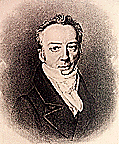
|
James Smithson
James Smithson, an English philanthropist and scientist, devoted most of his life to scientific research. When Smithson died in 1829 he left his entire estate to establish a site in Washington D.C. for the purpose of increasing the diffusion of knowledge. He not only left his entire fortune but also his library and collection of minerals. Smithson never visited the United States.
The Smithsonian Institution is the world's largest museum complex and research organization. Composed of sixteen museums and galleries, as well as the National Zoo, the Smithsonian's exhibitions offer visitors a glimpse into its vast collection numbering over 142 million objects.
I have heard about The Smithsonian all of my life and wished I could visit it.

|
The Castle
The Castle, as it is best known, is the oldest building of the Smithsonian Institution and one of America's finest Gothic Revival structures (by the architect of New York's St. Patrick's Cathedral, James Renwick, 1849). Its reddish color and irregular shape made up of turrets, spires, parapets and towers make it immediately recognizable.
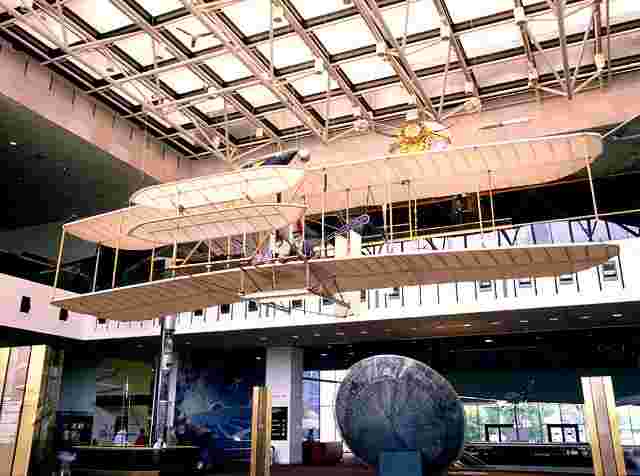
|
The Wright Flyer
On December 17, 1903, at Kitty Hawk, North Carolina, the 1903 Wright Flyer became the first powered, heavier-than-air machine to achieve controlled, sustained flight with a pilot aboard. It flew forward without losing speed and landed at a point as high as that from which it started.

|
The Spirit of St. Louis
On May 21, 1927, Charles A. Lindbergh completed the first solo nonstop transatlantic flight in history, flying his Ryan NYP "Spirit of St. Louis" 5,810 kilometers (3,610 miles) between Roosevelt Field on Long Island, New York, and Paris, France, in 33 hours, 30 minutes.

|
Mercury "Friendship 7"
The Mercury spacecraft in which astronaut John H. Glenn Jr. became the first American to orbit the Earth. On February 20, 1962, Glenn circled the Earth three times. The space flight lasted 4 hours and 55 minutes.

|
The Apollo 11 Command Module "Columbia"
The Apollo 11 Command Module "Columbia" carried astronauts Neil Armstrong, Edwin "Buzz" Aldrin, and Michael Collins on their historic voyage to the Moon and back on July 16-24, 1969. This mission culminated in the first human steps on another world.
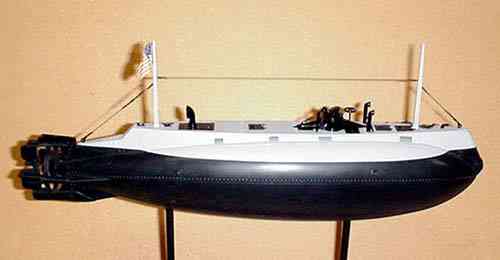
|
USS Holland
A Model
On 11 April 1900, the U.S. Navy purchased its first submarine, the Holland, for $150,000 from the new Electric Boat Company. After a series of trials in 1900-1901, she spent the rest of her service life (until 1905) as a training boat at the U.S. Naval Academy, Annapolis, Maryland.
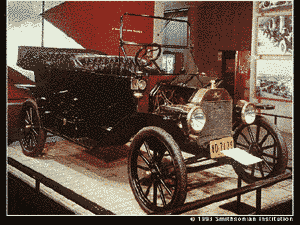
|
The Model T
The Ford Model T, made between 1908 and 1927, cost less than other cars, but it was sturdy and practical. It ran well on dirt roads and fields because it could twist as it rolled over bumps. The Model T looked like an expensive car but actually was very simply equipped. I wish I owned one of these.
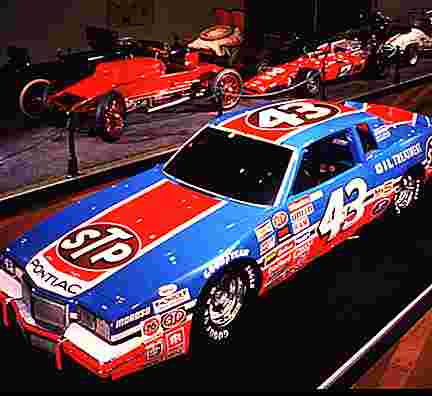
|
Richard Petty's Stock Car
The car is in the same condition it was in for the event in which it last ran--the Talladega 500 on July 29, 1984. Wow..quite a change from the cars of yesteryear.

|
The Tucker
The Tucker automobile had many advanced, innovative features, from its fastback shape to its swiveling center headlight and independent four-wheel suspension. Enhanced passenger safety was one of the Tucker's principal features. It had a pop-out windshield, padded dashboard, and a place where the front-seat passenger could crouch in the event of a collision.
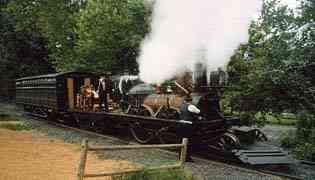
|
The John Bull Locomotive
The John Bull, the oldest complete and operable locomotive in the world, was instrumental in opening the railway age in the United States. Shipped disassembled from Newcastle, England, to Philadelphia in 1831, it was put together at Bordentown, New Jersery, in just ten days by a mechanic named Isaac Dripps who had never before seen a locomotive.

|
The Enola Gay
The Enola Gay, the B-29 bomber used in the atomic mission that destroyed Hiroshima, went on display June 28, 1995 at the Smithsonian's National Air and Space Museum in Washington, D.C. The display commemorates the end of World War II, as well as the role of the Enola Gay in securing Japanese surrender.
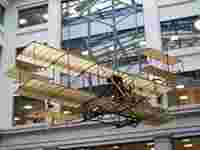
|
America's First Mail Plane
In 1911 this Wiseman-Cooke aircraft, shown on display in the museum's atrium, made the first mail flight officially sanctioned by a U.S. Post Office. The pilot carried letters from the mayor and postmaster of Petaluma, California, to their counterparts 18.5 miles away in Santa Rosa.
Let's continue on.
